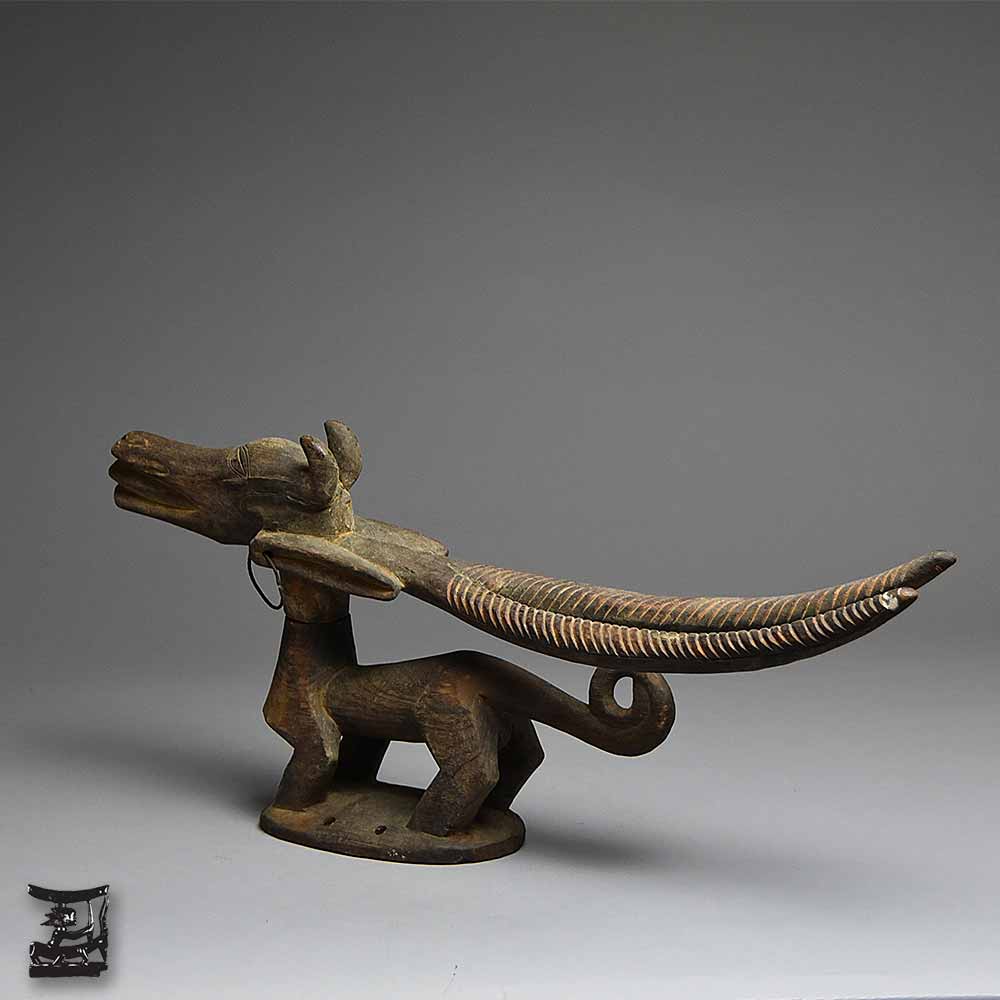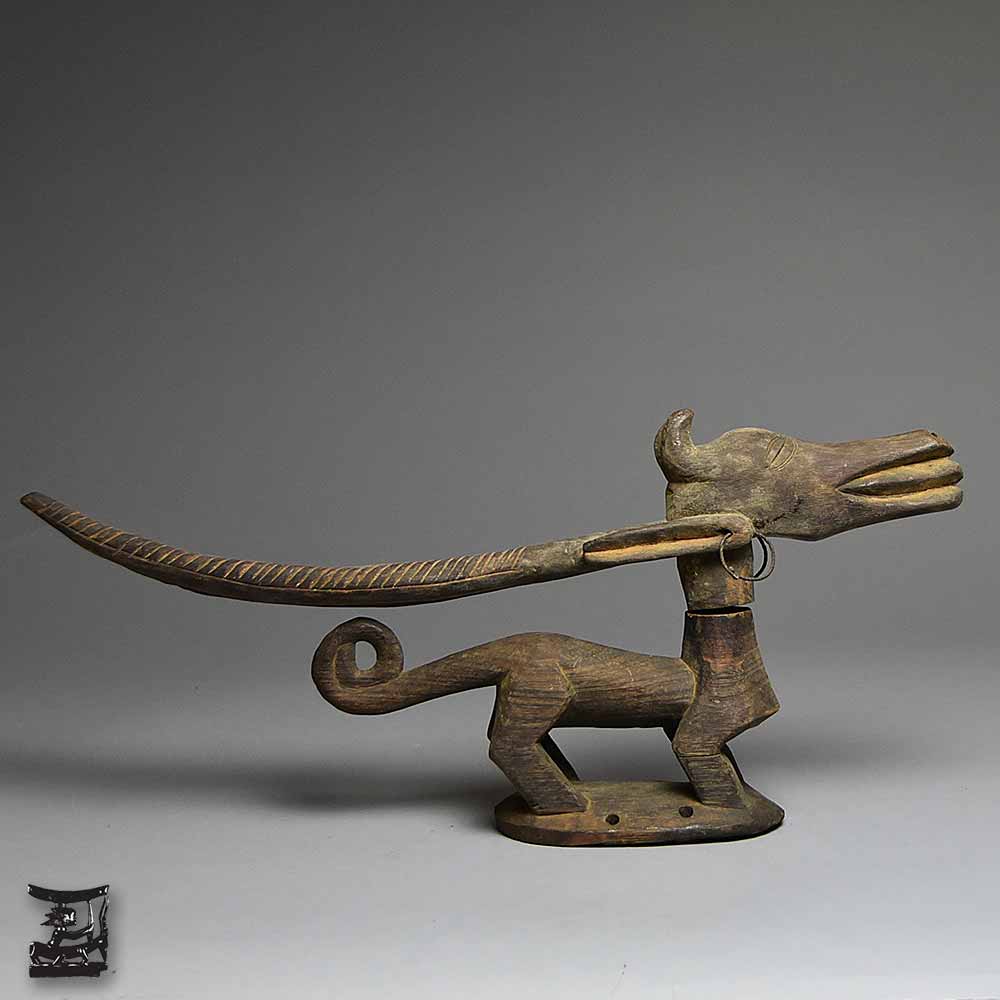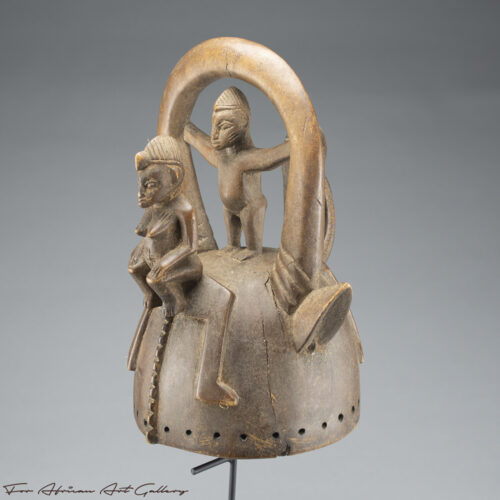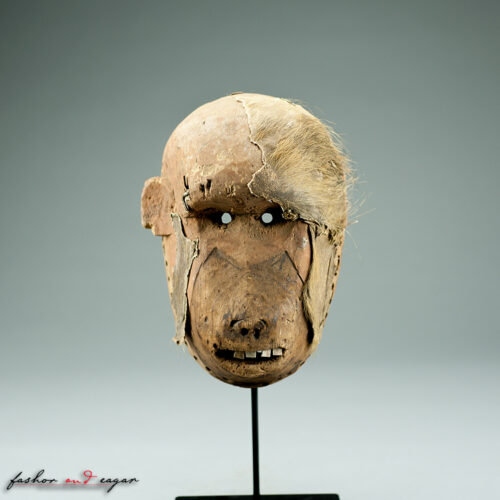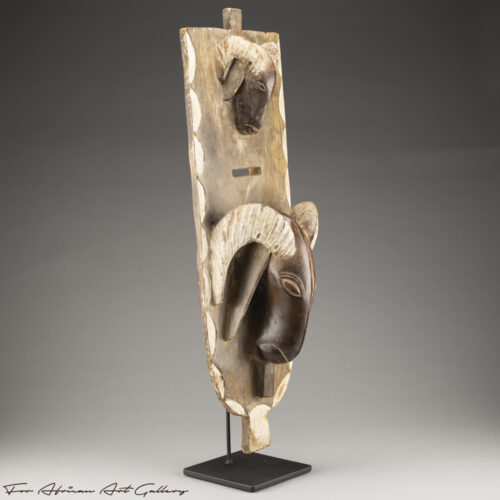Details

ITEM NAME:
Beledougou Region Bamana Chi Wara
ITEM #:
4507
ETHNICITY:
Bamana, Beledougou Region
ORIGIN:
Mali
MEDIUM:
Wood
DIMENSIONS:
22″ (55.9 cm) Long x 10″ (25.4 cm) Tall.
CONDITION:
Very Good.

PROVENANCE:
Private Estate Collection – Florida, USA.

CATALOGUE NOTE:
The cultural tapestry of the Bamana in Mali is richly interwoven with symbols and artistry, particularly evident in their intricate Chi Wara headdress masks. Celebrated not only for their ceremonial significance but also for their aesthetic diversity, these masks reflect a profound respect for agriculture and fecundity.
The Three Distinct Styles of the Chi Wara Headdresses
Chi Wara headdresses manifest in three primary styles, each emblematic of different Bamana locales. In the eastern expanse that stretches from Sikasso to Segou, the “vertical” masks rise with prominence. Farther west, within the Ouassoulou region, the masks adopt a stark abstraction. However, it’s the Beledougou vicinity, encompassing Bamako and parts of northwestern Mali, where the “horizontal” masks dominate the local craft—a name stemming from the across-the-head positioning of the horns.
A Closer Look at the Beledougou Chi Wara
The Beledougou Chi Wara headdresses are testament to the ingenuity of the local artists. The one under scrutiny reveals much of their talent in its construction—two separate wooden pieces, the head and body, seamlessly unified at the neck by a metal strip. Worn atop the head with a woven cap, this mask is a functional piece of craftsmanship as much as it is an object of wonder.
Symbolism in Shape and Form
At first glance, the characteristics of a roan antelope (Hippotragus equinus) are apparent, notably the sweeping horns. Yet, upon closer inspection, we discern elements akin to an aardvark (Orycteropus afer)—from the contours of the head and limbs to the detail of the open-mouthed tongue. The aardvark is revered by Bamana farmers for its burrowing prowess, making it a fitting motif for a culture deeply rooted in agriculture.
Adding another layer of cultural narrative is the figure of a standing female, fastened securely to the horns of the antelope—a symbol intertwined with fertility and bounty. For the Bamana, the abundance of a man’s harvest enriches his appeal as a spouse, enabling him to support multiple wives. The parallels drawn between the acts of plowing, sowing, and procreation highlight their collective significance in ensuring the continuity of human life.
Concluding Thoughts
The Chi Wara headdress masks of the Beledougou region are a magnificent conduit through which the Bamana express their societal values. These masks intricately blend aesthetics and utility while narrating the intimate ties between sexual, agricultural, and existential vitality. Their enduring legacy remains a topic of fascination, offering us a window into the Bamana’s profound connection with the earth and its cycles.

